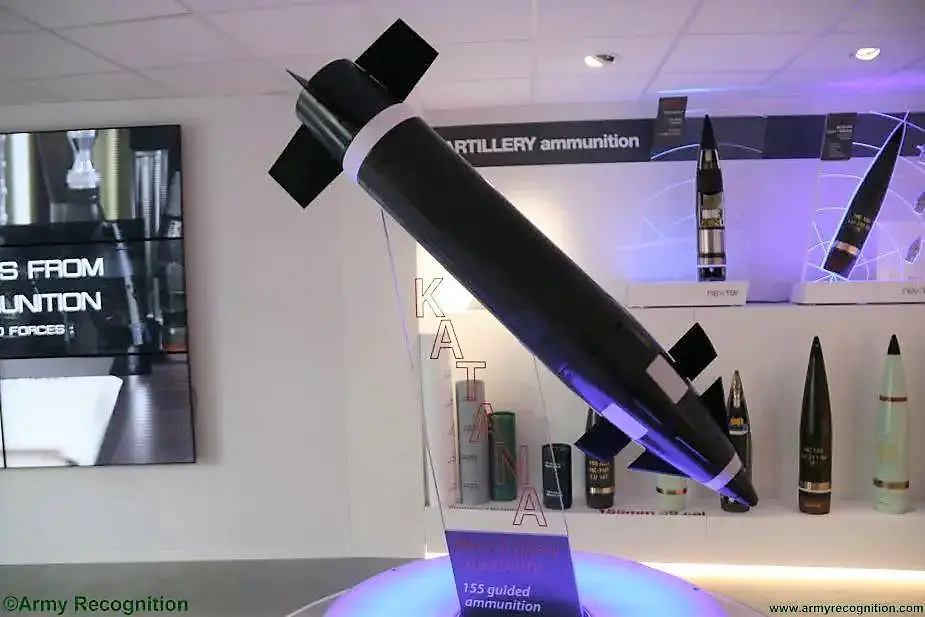Breaking news
Australia and France to launch joint production of 155mm artillery rounds for Ukraine.
France and Australia signed an agreement to supply 155 mm shells to Ukraine to support it in its war against Russia, announced on Monday, January 30, the French Defense Minister Sébastien Lecornu and his Australian colleague Richard Marles.
Follow Army Recognition on Google News at this link

Mock-up of Nexter Munitions' Katana 155 mm guided ammunition (Picture source: Army Recognition)
"Several thousand 155mm shells are going to be produced jointly," declared Sébastien Lecornu, while Richard Marles spoke of a "multi-million dollar Australian project", a "new cooperation between Australian and French defense industries ”.
The French defense minister specified that Nexter — a major French defense manufacturer — would be partnering with Australian companies that would supply the powder for the shells. “This forms part of the ongoing level of support that both France and Australia are providing Ukraine to make sure that Ukraine is able to stay in this conflict and be able to see it concluded on its own terms”, Australian Defense minister Richard Marles added.
Neither minister would specify quantities beyond “several thousand” artillery shells but they indicated this would be a long-term collaboration.
Let us recall that, at Eurosatory 2018, Nexter, a company of KNDS, presented its Katana, the latest in 155 mm ammunition. Nexter, through its Ammunition Business Unit (Nexter Munitions, Mecar and Simmel Difesa), is one of European’s leaders in the field of ammunition.
The Katana ammunition can be fired from all 155mm/52caliber artillery systems, while retaining the traditional artillery qualities: continuous fire, all-weather capability, high cost/efficiency ratio. Thanks to its specific architecture, Katana can be used for close support and will treat all types of targets thanks to its multi-mode rocket, which is programmable to operate by proximity, impact, or with delay: allowing the penetration of the military payload.
With a maximum range between 30 km for the first generation and 60 km for the next, Katana will strike targets with pinpoint precision. The projectile's guidance is ensured by a hybridization between a GNSS signal receiver and an inertial measurement unit. In the future, meter-scale precision will be accessible through the addition of an optional semi-active laser distance gauge.




























